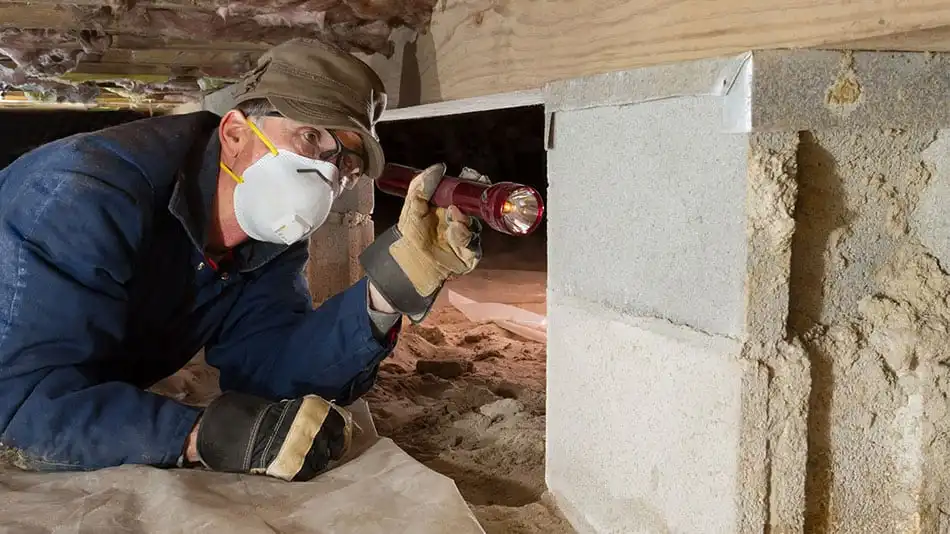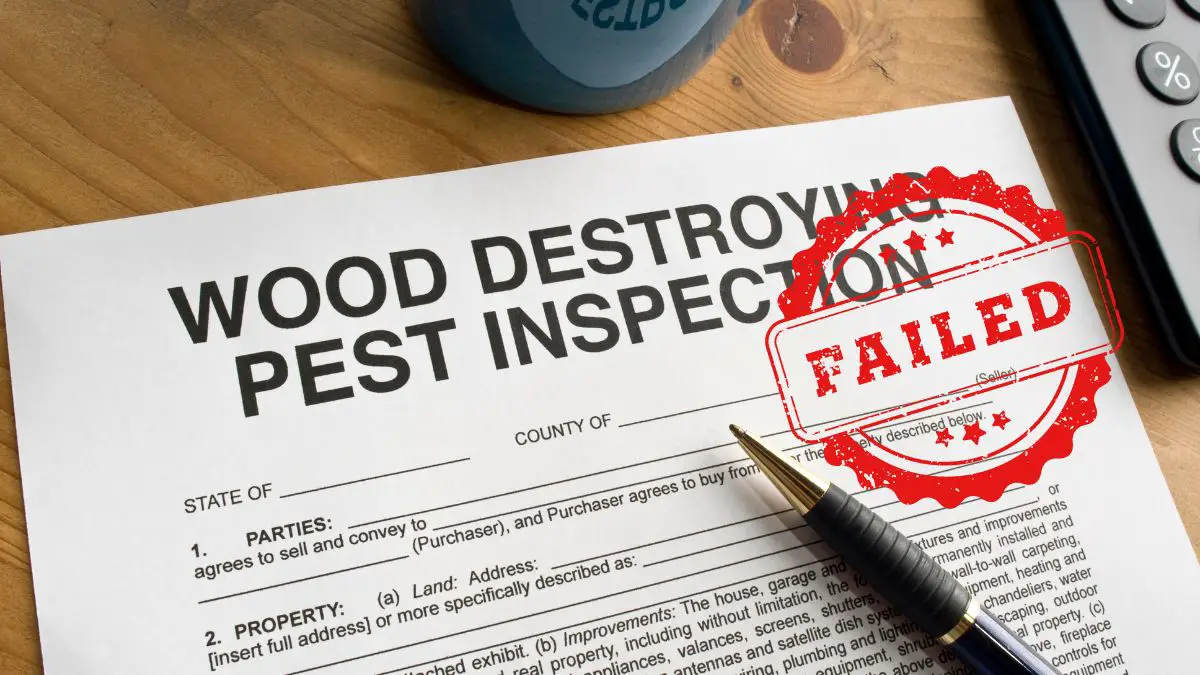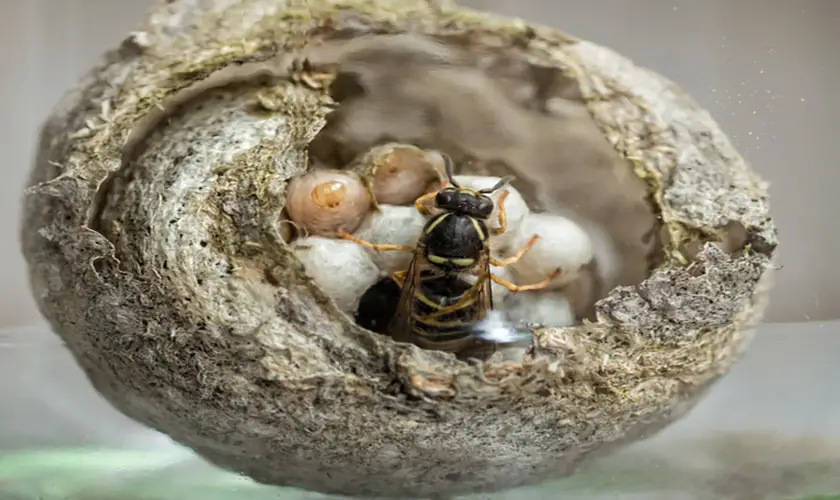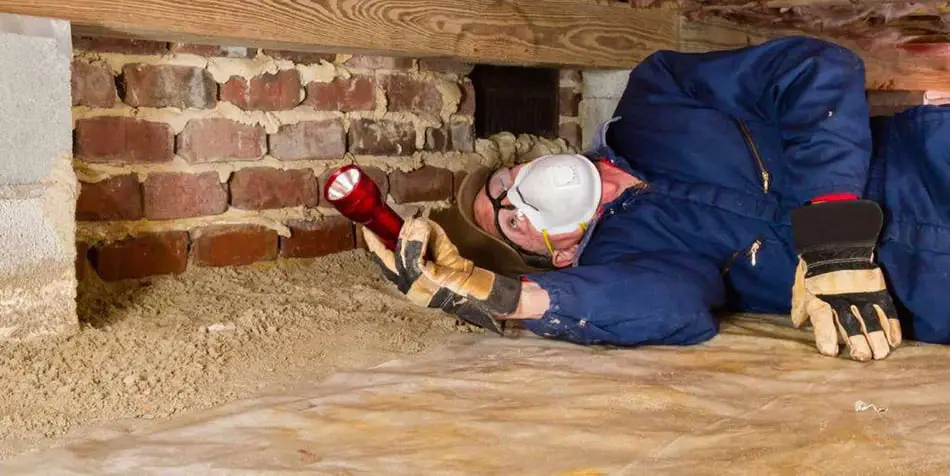
Finding a hole in your woolen sweater is annoying. You wrack your brain, trying to think when and how you caught it to make that hole. But then you start to notice more holes, and your heart sinks. Something is eating your clothes.
Most people know of clothes moths and carpet beetles, but there are seven different types of bugs that commonly eat your clothes. And they don’t just eat wool; they feed on most natural fibers and even some blended fabrics (natural and synthetic blends).
Seven types of bugs will eat your clothes:
- Clothes moths
- Carpet beetles
- Silverfish
- Firebrats
- Cockroaches
- Crickets
- Termites
Knowing about each of the bugs that eat clothing is essential to identify and eliminate them correctly.
Get FREE quotes from licensed pest control technicians in your area today. Whether you need spraying for ants, roaches, spiders, ticks, mosquitos, or bed bugs, We Can Help! All technicians are screened, licensed, and insured.

1. Clothes Moths
Physical Appearance Of Clothes Moths
Clothes moths are fungus moths. The two most common clothes moths are webbing clothes moths (Tineola bisselliella) and casemaking or case-bearing clothes moths (Tinea pellionella).
- Webbing clothes moths: The adults are about 1/4-inch long with a 1/2-inch wingspan. The forewings of these moths can be shades of beige, their hindwings are white-grey, and they have a tuft of red-gold hairs on the top of their heads. At the bottom of their forewings and hind wings is a golden fringe.
The larvae are white and typically too small to be seen or noticed. They are called webbing clothes moths because the larvae spin patches of webbing as they move and eat.
- Casemaking clothes moths: The adults are similar in size to webbing clothes moths. Their forewings are also various shades of beige but with dark specks, and their hindwings are un-speckled and pale brown-grey color. The tuft of hair on their heads is gray. The forewings and hindwings of casemaking clothes moths are also fringed.
The larvae of casemaking clothes moths are not often seen, but they can be easily found and identified because they use their silk and the fibers of your clothing to spin protective cases for themselves. These cases, which give the moth its name, are 1/4-inch to 1/2 inches long. They are dragged around by the larvae as they feed and expand as they grow.
Lifecycle Of Clothes Moths
Female clothes moths lay an average of 40-50 soft white eggs over 2-3 weeks, after which they die. Males live longer and continue to mate until they also die. The eggs adhere to the fibers of materials and hatch into larvae 4-10 days later. Warmer weather increases the rate of hatching.
The larvae feed and grow, molting 5-45 times over 5 weeks to 2 years, depending on humidity, temperature, and food availability.
Once webbing clothes moths reach the pupal stage, they move away from the material they have been feeding and spin a case in a protected area. Casemaking clothes moths pupate in their already spun cases on the materials they have been feeding.
In warmer seasons, pupation can be completed within 8-10 days. In colder seasons, it can take one month.
Multiple generations of clothes moths can be hatched in a single year, so your clothes-eating moth problem quickly grows.
Ideal Living Environment And Feeding Habits Of Clothes Moths
Clothes moth adults do not cause damage; the larvae are the ones that feed on the fibers of your clothing. Clothes moths first target natural materials such as cotton, feathers, fur, hair, leather, silk, and wool.
If they cannot find these sources, they will feed on blended materials containing natural and synthetic fibers. They cannot eat purely synthetic clothing because it has no nutrients. They are after the keratin protein found in natural fibers.
The adult clothes moths do not behave like other moths. They do not like to fly and will rather crawl. They are also not attracted to light, preferring dark spaces like your closet and clothing chests. Moisture is an added attraction, so you must dry your clothing completely before packing it away, especially if you store long-term clothing.
Signs indicating that clothes moths are responsible for the holes in your clothing include the adult moths crawling over the materials, the cases of casemaking clothes moths, and sand-like fecal pellets amount the fibers.
Clothes moths can also be found in carpets, upholstered furniture, and grains and cereals in the kitchen.
Getting Rid Of Clothes Moths
- Dry-cleaning: Dry-cleaning will remove clothes moth eggs and larvae and prevent moisture, mitigating the chance of another infestation.
- Mothballs and moth crystals: Mothballs contain naphthalene, and moth crystals contain paradichlorobenzene. If you will use these chemicals, follow the instructions carefully to minimize the toxicological risk to yourself and further damage to your clothing.
- Cedar blocks and lavender: You can use these natural substances instead of chemicals. It may take longer to eradicate the problem, but they work and can act as an excellent preventative.
Remember, you need to clean your closets, clothing, carpets, and any other fabric in your room to eliminate the problem. There is no point in cleaning your clothes and putting them back into an infested closet.
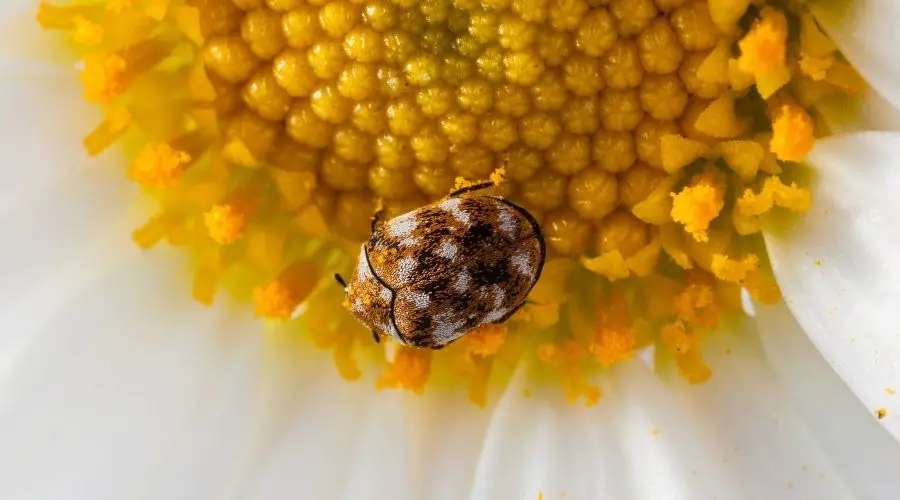
2. Carpet Beetles
Physical Appearance Of Carpet Beetles
There are different types of carpet beetles. Common species are the varied or variegated carpet beetle (Anthrenus verbasci), the black carpet beetle (Attagenus unicolor), and the common carpet beetle (Anthrenus scrophulariae).
- Variegated or varied carpet beetles: The adults are round-bodied, approximately 1/8-inch long, and have splotches of black, brown, white, and yellow. The larvae are elongated or oval-shaped, 1/6-inch in length, and covered in alternating bands of light brown and dark brown hairy bristles.
- Black carpet beetles: The adults are similar in shape and size to the variegated carpet beetles, but they have completely black bodies with brown legs and are 3/36- to 1/8 inch long. The larvae are red-brown, approximately 1/30-inch in length, and have slightly tapered bodies and bristles.
- Common carpet beetle: The adults are similar in shape and size to the variegated and black carpet beetles, but they are black, white, red, and orange. The larvae are red-brown and covered in hairy bristles.
Lifecycle Of Carpet Beetles
Female carpet beetles lay soft, white eggs in clothing, other materials such as upholstered chairs and carpets, and floor cracks; in other words, she lays the eggs on or near larval food sources. The eggs hatch within 5-20 days (faster in warmer weather), and the larvae immediately feed on materials.
The larvae feed and grow, molting 6-15 times over 2-3 months, depending on the temperature, humidity, food availability, and type of carpet beetle. They pupate in the last feeding location. Pupation can last between 7-20 days.
Adults live 20-60 days; up to four generations can be hatched within a year.
Ideal Living Environment And Feeding Habits Of Carpet Beetles
As with clothes moths, the larvae of carpet beetles are responsible for destroying your clothes, feeding on the keratin proteins found in natural materials such as cotton, feathers, fur, hair, leather, silk, and wool. If they cannot find these sources, they will feed on blended materials containing natural and synthetic fibers.
The larvae avoid light, so you will likely find them hidden in the folds and creases of your clothing in closets and chests.
The adult carpet beetles are attracted to light and feed on pollen so that You can bring them into the house with cut flowers. They can fly and land on laundry and be brought into the house in this way.
Signs that indicate that carpet beetles are responsible for the holes in your clothing include finding the larvae (when they are bigger), finding the bristled cases shed by the nymphs, or finding adults near entrances and windows.
They are called carpet beetles because the larvae are known to eat carpets. Still, they will eat anything made of natural fibers, including your clothing, bed linen, curtains, and upholstered furniture.
Here is an excellent video showing how you can tell if you have a carpet beetle infestation:
Getting Rid Of Carpet Beetles
- Vacuum cleaning: Vacuum closets, carpets, and baseboards to remove the eggs and larvae. It would be best to go over the area several times and in different directions when vacuuming because the larvae can hide in cracks and folds.
- Dry-cleaning: Dry clean your clothing to remove the eggs and larvae.
- Mothballs and pyrethroid insecticides: You can use chemicals such as naphthalene (in mothballs) and pyrethrins but follow the instructions carefully to minimize the toxic risk to yourself and your household and also to prevent damaging your clothes.
Remember, you need to clean your closets, clothing, carpets, and any other fabric in your room to eliminate the problem. There is no point in cleaning your clothes and putting them back into an infested closet.

3. Silverfish
Physical Appearance Of Silverfish
Adult silverfish (Lepisma spp.) have a carrot or fish-shaped bodies, tapering into tails with long filaments, and have antennae but no wings. They are called silverfish because of their shiny silver scales and are approximately 1/2 inch in length.
Lifecycle Of Silverfish
Female silverfish can lay up to 100 small, white, oval-shaped eggs in her lifetime, but only up to 60 at a time. The eggs hatch between two weeks or two months of oviposition and emerge as small, pale versions of the adult silverfish known as nymphs.
When nymphs morph into adults, they continue to grow and shed. Silverfish can molt 17-66 times within three months to three years.
Ideal Living Environment And Feeding Habits Of Silverfish
Silverfish are nocturnal and attracted to dark and cool areas like cellars, bathrooms, closets, and clothing chests for breeding and feeding. They prefer moist living conditions, so you often find them trapped in your basins and bathtubs.
They feed on natural fibers like wool, cotton, and silk and eat crayons and paper. Their attraction to paper means you can bring them into your house in cardboard containers and books.
Signs that silverfish are responsible for the holes in your clothes include irregular-shaped holes and seeing nymphs and adults. If you find any in your bathroom, check your clothing to see if they have found your closet.
Getting Rid Of Silverfish
- Cleaning and drying: Clean and completely dry your clothes and closet to eliminate the eggs, nymphs, and adults. Remember to dump the vacuum bag immediately because the silverfish will happily eat through it.
- Insecticides: You can also use pyrethroid insecticides to get rid of silverfish, but you must follow the instructions carefully.
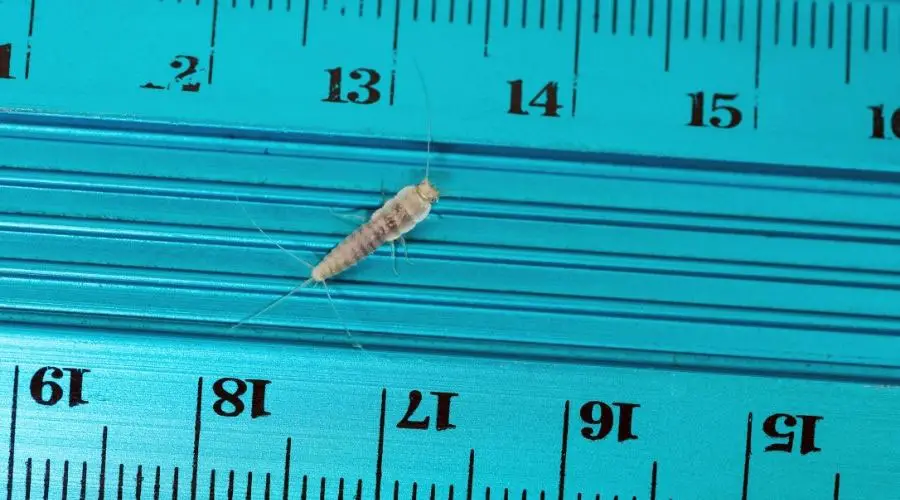
4. Firebrats
Physical Appearance Of Firebrats
Adult firebrats (Thermobia spp.) are similar in appearance to silverfish. They also have tapered, carrot-shaped bodies, tail filaments, antennae, and no wings. They are 1/4- 1/2-inch in length and are a mottled silver-brown color.
Lifecycle Of Firebrats
The female firebrat will lay eggs after 1.5 to 4.5 months, depending on the right temperature. The females can live up to five years, during which time they can lay 6000 eggs. The eggs hatch into nymphs after 13 days and can become adults capable of reproducing within two months of hatching.
Several generations can hatch within a year, meaning a firebrat problem can quickly get out of control.
Ideal Living Environment And Feeding Habits Of Firebrats
Firebrats are nocturnal and prefer warmer areas than silverfish. Once they discover a food source, they will stay close to it. Food sources include cotton, linen, rayon, starched clothes, and sugary stains on clothes.
Signs that firebrats are responsible for the holes in your clothes include irregular-shaped holes and seeing nymphs and adults.
Getting Rid Of Firebrats
You can eliminate firebrats in the same way as silverfish. This is helpful because you can mistake one for the other. Other ways to prevent them from coming back are:
- Sealing holes and cracks around your windows and doors.
- Fix any leaking or plumbing that could potentially bring them in. This will reduce their water source.
- Lower the temperature and humidity in your home with fans, air conditioners, and dehumidifiers.

5. Cockroaches
Common house cockroaches can also cause holes in your clothing. They are not attracted to the fibers of your clothing, and they don’t need your clothing to reproduce and grow.
They are opportunistic feeders attracted to sweat, food and beverage, and laundry starch that you can find on your clothing. As they feed on the stains and starch, they cut the fibers, making holes or making it easier for you to tear holes in your clothing.
Getting Rid Of Cockroaches
Clean and sanitize your closet and bedroom. Don’t leave dirty laundry in the closet or on the floor. You can spray individual cockroaches with household insecticides when you see them or spray a barrier around your closet and clothing chest.
There are also many natural alternatives for you to choose from. Here are some of the ways to naturally get rid of cockroaches:
- Keep your kitchen and home thoroughly clean.
- Bay leaves.
- Garlic and onion powder.
- Cut a lemon in half and squeeze it all over your surfaces.
- Vinegar and peppermint essential oils.
- Pure neem oil.
- Catnip. Set them around popular roach places and change the leaves when necessary.
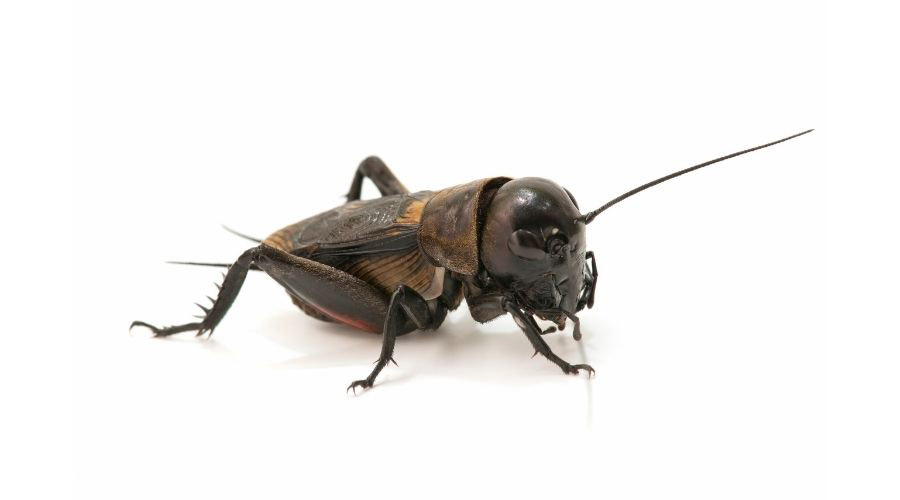
6. Crickets
As with cockroaches, crickets will opportunistically eat the sweat stains, food stains, and laundry starch on your clothing, but their lifecycles and survival are not tied to the ingestion of these materials. As they feed, they cut the fibers and make holes or fray the fabric, making them more susceptible to holes.
Getting Rid Of Crickets
Block entrances into your home; seal cracks, and install screens over doors and windows. You can also use insecticides on the individual crickets if you see them, or you can spray a barrier around your closet and clothing chests.

7. Termites
As with cockroaches and crickets, termites eat sweat stains, food stains, and laundry starch on clothing, fraying or cutting holes into the materials. They are not dependent on these materials to develop.
Getting Rid Of Termites
If you find termites on your clothing, the chances are high that this is incidental to a larger, house-wide infestation. You should employ commercial pesticides or call in a professional exterminator.
Conclusion
Insects such as clothes moths, carpet beetles, silverfish, and firebrats actively consume natural fibers, reproduce, and develop in closets and other clothing storage spaces. Their presence is usually only detected once they have holes in your clothing. They also typically prefer wool and cool, dark places, so winter storage bins, which are only pulled out once a year, are ideal.
You can get rid of these clothes-consuming pests with a thorough cleaning and drying (they typically enjoy moist environments, too), heat or freeze treatments, vacuuming, or insecticides.
Other insects, such as cockroaches, crickets, and termites, will eat sweat, food and drink stains, and laundry starch from clothing. In this way, they fray or but holes in the materials. They do not actively reproduce near clothing as they have other food sources, but they can eat your clothes if they are in your closet.
Cockroaches and crickets don’t typically infest your closet, so you can deal with them individually using household pesticides. Termites in your closet indicate a bigger problem, and you should treat your whole house.
Get FREE quotes from licensed pest control technicians in your area today. Whether you need spraying for ants, roaches, spiders, ticks, mosquitos, or bed bugs, We Can Help! All technicians are screened, licensed, and insured.


